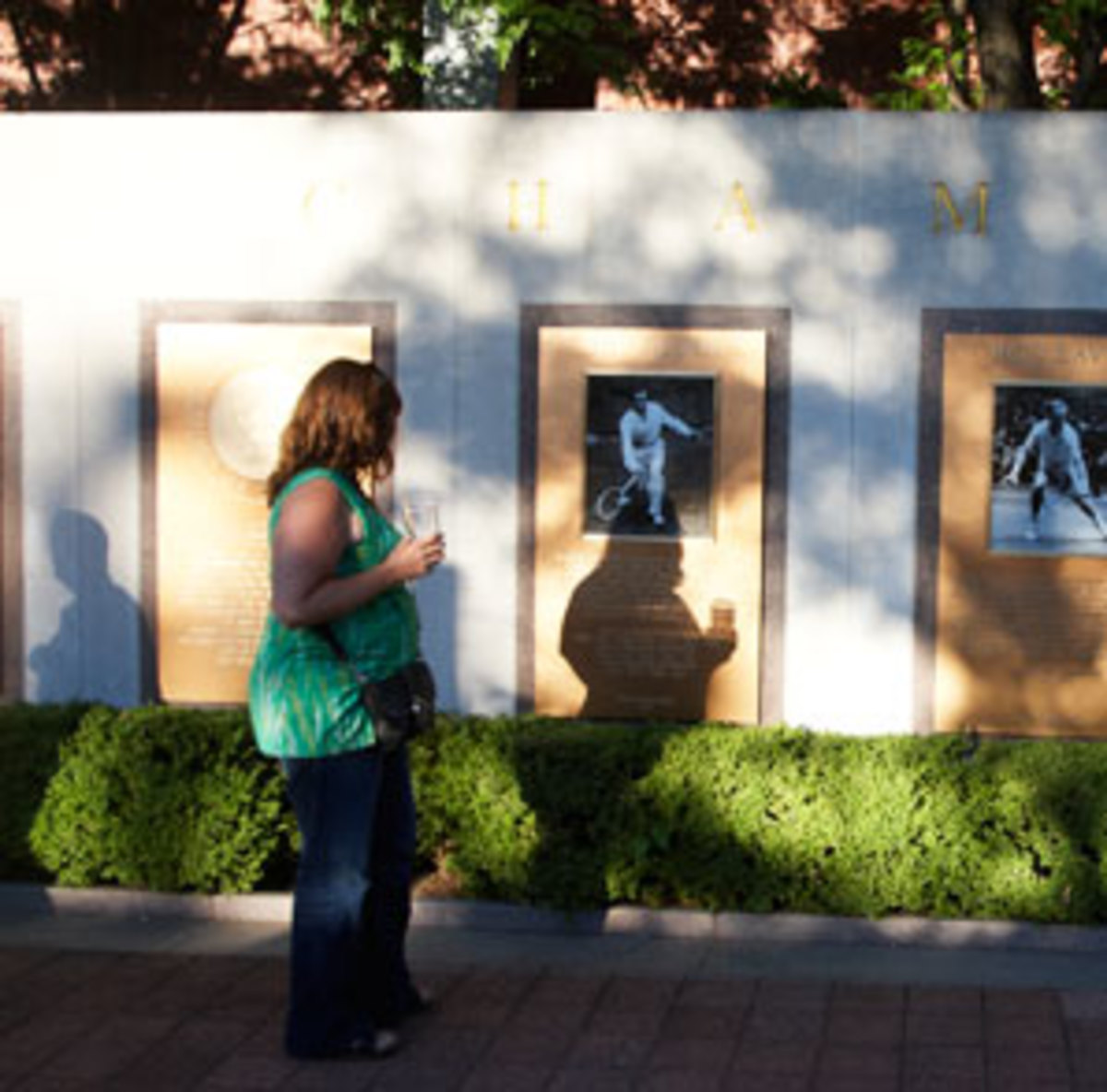
Despite rich history, glamorizing tennis' past undermines present
Jose Bautista, the Toronto Blue Jays slugger, was talking to Time Magazine recently and complained about his sport's lusty embrace of its past. "It's always felt to me that baseball more markets their former stars than their current stars," Bautista said. "In order to make the game grow, you've got to make kids and fans of now be identified with the players of now. Glorifying the old days and kind of putting today at a second level, I just don't think that's very smart."
Sound familiar?
Attend the U.S. Open -- which is to say, sit in Arthur Ashe Stadium of the Billie Jean King National Tennis Center -- and it's hard to shake the feeling you're in a time warp. Vera Zvonareva (the second seed in the 2011 women's draw) and David Ferrer (the fifth seed among the men) walk the grounds unrecognized. Perhaps that's because fans are busy strolling by the various busts in the "Court of Champions" promenade or distracted by the banners of Agassi, Connors, Sampras et al, or walking through the Hall of Fame Exhibit.
Those watching from home also get a supersized serving of nostalgia. There's so much "back in my day" chatter that the past morphs into present. Along with Tracy Austin and Mats Wilander, Martina Navratilova is on the Tennis Channel. Her rival, Chris Evert, works here for rival ESPN. As, of course, does John McEnroe. Johnny Mac is 52 -- not "87" as Andy Roddick put it pointedly last night. Even Mac's Glory Days of 1980-84 are pushing the upper limits of the 18-29 demographic. Still, he remains the figure most closely tied to this event.
Speaking of McEnroe, he was the subject of two recent books about his rivalry with Borg. The books were quite good, but this was a rivalry that ended more than a quarter-century ago. Borg and McEnroe were also the subject of a recent HBO documentary. There are 256 players in the draws of the 2011 U.S Open; yet whose likenesses graced the cover of the pre-tournament edition of the New York Times Magazine?
Not to be outdone, a publisher recently bought the rights to the memoir of Jimmy Connors, who was working here last here and, we've already heard ad infinitum, is 20 years removed from his run to the semifinals at age 39. Ivan Lendl makes appearances, too, touting his tennis academy. Old tennis soldiers don't fade away; they're currently in hair and make-up, on the phone with their agents.
There's something endearing and noble about this. If tennis doesn't offer the most generous pension plan to retirees, the sport looks after its own in other ways. While other sports kick their athletes to the curb when they're no longer playing, tennis finds them work in other capacities. As for television, tennis is hardly the only sport to employ ex-jocks. Former champions have a level of first-hand experience that "mere mortals" will never know. Why not put them in a broadcast booth? What's more, for a sport with such a rich history, it'd be foolish to ignore the past.
And yet, as Bautista notes, when yesterday is stressed too heavily, it has the effect "of putting today at a second level." There is a finite quotient of "oxygen" available for this niche sport and McEnroe and the rest of Team Nostlagia can consume an awful lot of it. Instead of hearing still more tales about 1981 -- which, trust me, to most kids may as well be Don Budge's Era -- what if we apportioned some of that air and space to, say, Andrea Petkovic? In addition to lavishing a book deal on Connors, what if we published and read accounts of the modern game? So long as HBO is committing funds to still more McEnroe-Borg hagiography, what if there were a "Hard Knocks" series on, say Novak Djokovic?
It's one of the first rules of covering individuals: "everyone comes from somewhere." It's hard to imagine that Zvonareva and Sam Stosur and Nicolas Almagro don't have a story to tell. Why don't we know it? The standard answer to all this: everything is market-driven. Fans would rather hear still another reference to "You Cannot Be Serious!" than learn more about Kevin Anderson. The market research "proves" it! This is the same reason why NBC tape-delayed the Wimbledon semifinals.
But it's a vicious cycle. How are today's players supposed to establish their personalities and (dare we say it?) brands when so much of the sport's focus is on the "when-it-was" era? Again invoking Bautista, how are kids today -- for perspective, the people born in this millennium -- going to identify with players of "now" when players of "then" are still so prominent?
A look-back is one thing. Looking backwards is something else entirely.





